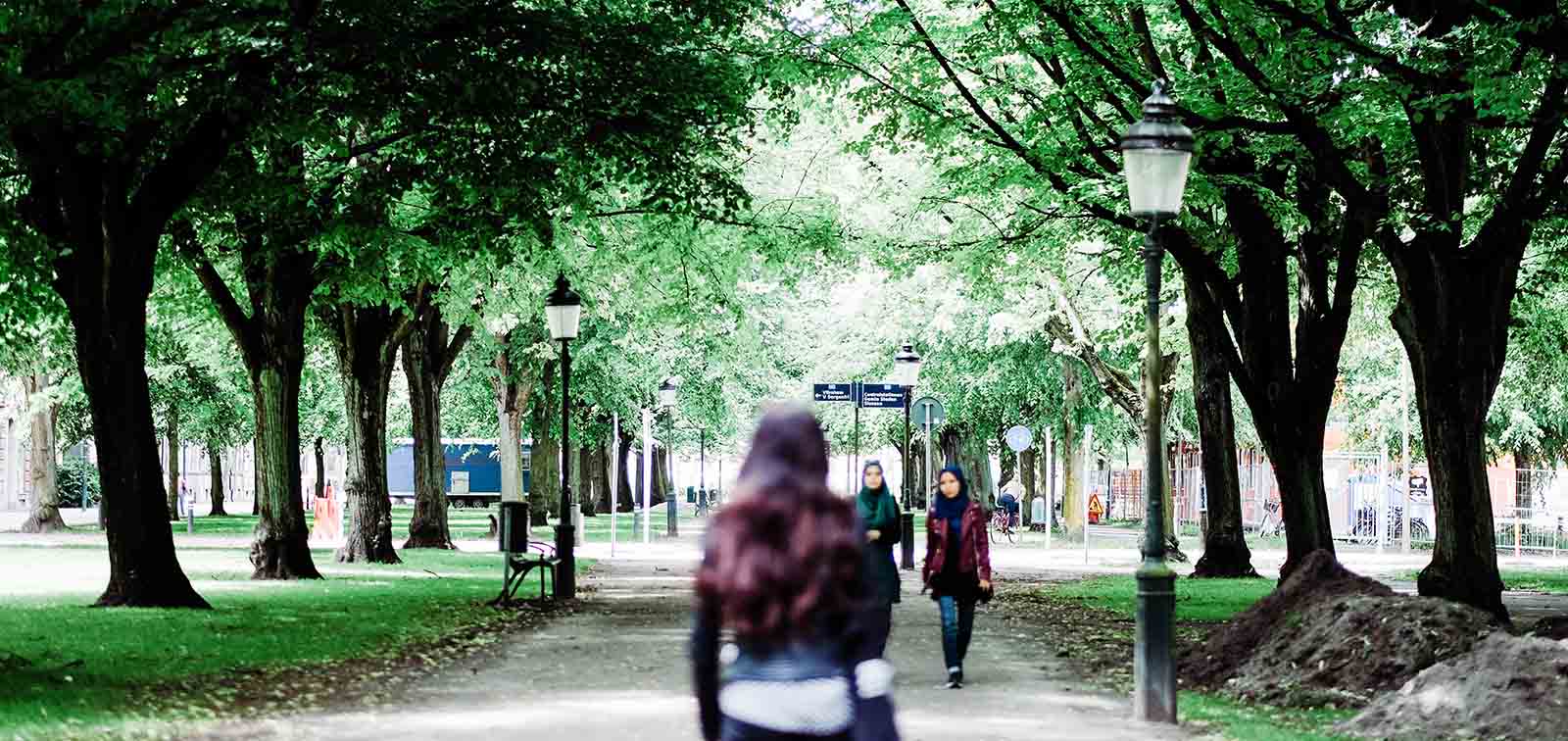Quality and Use of Green Spaces May Determine Their Health Benefits
Two studies led by ISGlobal explore how natural spaces influence well-being
31.10.2019
Numerous scientific studies have demonstrated the benefits that green spaces have in people’s lives. In fact, various studies led by ISGlobal have found links between exposure to green spaces such as parks and forests and various health improvements, including slower physical and mental decline, decreased risk of breast cancer and, most recently, reduced risk of developing metabolic syndrome. However, very little is known about the mechanisms that mediate this positive impact.
The Barcelona Institute for Global Health (ISGlobal), a centre supported by ”la Caixa”, recently published two new studies on how natural spaces improve health and well-being. Both studies looked at four European cities: Barcelona, Spain; Stoke-on-Trent, United Kingdom; Doetinchem, Netherlands; and Kaunas, Lithuania. The studies were a part of PHENOTYPE, a project led by ISGlobal researcher Mark Nieuwenhuijsen that aims to study the interconnections between human health and exposure to outdoor environments.
In the first study, published in Environmental International, the researchers considered four parameters: amount, quality, use and experience of natural outdoor environments. “Many earlier studies focused on quantitative measures of green spaces such as the amount of vegetation and the distance from people’s homes, without taking into account the quality of the spaces or the activities that people engage in there,” commented Nieuwenhuijsen, leader of the study and coordinator of the Urban Planning, Environment and Health Initiative at ISGlobal.
In each of the four cities, a thousand people between 18 and 75 years of age answered a series of survey questions on topics related to their local green spaces, including frequency of use, perceived quality, distance from their homes, activities they engage in, how often they socialise with other people and how they feel while using the spaces.
“Our research shows that the presence of green space is not the main factor that increases the frequency of physical activity, walking and cycling,” commented Nieuwenhuijsen. “ Perceived greenness, time spent in local green spaces, and the feeling that these spaces are important for health-related activities are factors associated with more time spent performing physical activity. In fact, we found a 19-minute increase in activity for every point increase in this category.”
Similarly, high scores for the quality of the urban landscape, perceived greenness, satisfaction with the spaces and the importance of the green spaces forhealth-related activities were also associated with a higher frequency of social contacts with neighbours.
The researchers also found that Barcelona had the least green space of the four cities studied. Just 49.3% of participants from Barcelona had a natural outdoor environment within 300 metres of their home, compared with 99.9% of participants from Doetinchem.
Moreover, when the researchers analysed various elements related to satisfaction with green spaces (quality, amount, maintenance and safety), they once again found clear differences between the cities. Participants living in Barcelona gave low satisfaction scores for quality and amount of green space , while residents of Kaunas gave the lowest scores for maintenance and safety. “The differences found between the cities show how important it is to develop policies adapted to the local context,” commented Nieuwenhuijsen.
Green space influences people’s moods
In the second study, also published in Environment International, nearly 370 people were asked to use a smartphone to record their moods over a period of seven consecutive days. The smartphone also tracked if they were visiting urban natural environments.
“This study shows that there is a positive association between mood and exposure to green spaces,” commented Michelle Kondo, lead author of the study. “However, this relationship varies as a function of age, gender and city of residence. In fact, the beneficial effect of green spaces on mental health was especially notable in men.”
The second study shows that exposure to green space has a larger effect on mood during 10-minute visits than during 30-minute visits. “This could mean that immediacy is a key element in the emotional response,” commented Kondo.
“Both studies demonstrate that the use and quality of green spaces are key factors that influence physical activity, social contacts and emotional well-being,” commented Nieuwenhuijsen. “We need to take these experiences into account if we want to understand what motivates people to visit green spaces. Initiatives such asinvolving local residents in the park design process or organising activities in urban natural environments could make these spaces even more beneficial for people’s health.”
References
Hanneke Kruize, Irene van Kamp, Magdalena van den Berg, Elise van Kempen, Wanda Wendel-Vos, Annemarie Ruijsbroek, Wim Swart, Jolanda Maas, Christopher Gidlow, Graham Smith, Naomi Ellis, Gemma Hurst, Daniel Masterson, Margarita Triguero-Mas, Marta Cirach, Regina Gražulevičienė, Peter van den Hazel, Mark Nieuwenhuijsen. Exploring mechanisms underlying the relationship between the natural outdoor environment and health and well-being - Results from the PHENOTYPE project. October 2019. https://doi.org/10.1016/j.envint.2019.105173
Michelle Kondo, Margarita Triguero Mas, David Donaire-Gonzalez, Edmund Seto, Antònia Valentín, Gemma Hurst, Glòria Carrasco-Turigas, Daniel Masterson, Albert Ambròs, Audrius Adele, Naomi Ellis, Tomas Grazulevicius, Wim Swart, Nora Davis, Jolanda Maas, Michael Jerrett, Regina Grazuleviciene, Christopher Gidlow, Mark Nieuwenhuijsen. Momentary Mood Response to Natural Outdoor Environments in Four European Cities. Environmental International. October 2019. https://doi.org/10.1016/j.envint.2019.105237



